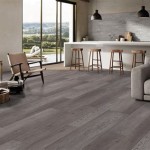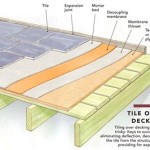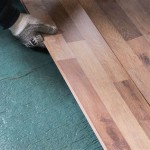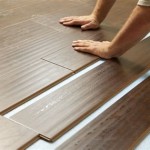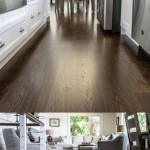Average Cost Of Natural Stone Flooring Per Square Foot
Natural stone flooring is a popular choice for homeowners seeking elegance, durability, and a unique aesthetic. Its timeless appeal stems from the inherent variations in color, texture, and pattern that each stone possesses. However, the cost of natural stone flooring can vary significantly based on several factors, making it crucial to understand the components that contribute to the overall project budget. This article provides a detailed overview of the average cost of natural stone flooring per square foot, exploring the various types of stone, installation expenses, and additional considerations that impact the final price.
The term "natural stone" encompasses a wide range of materials quarried directly from the earth. These materials include granite, marble, limestone, slate, travertine, and sandstone, among others. Each type exhibits distinct characteristics that influence its cost, suitability for specific applications, and aesthetic appeal. Understanding these differences is the first step in assessing the potential expenses associated with natural stone flooring.
Granite, known for its exceptional hardness and resistance to scratches and stains, is a durable option often used in high-traffic areas such as kitchens and entryways. Marble, prized for its luxurious appearance and intricate veining, is a softer stone that requires more maintenance and is typically used in bathrooms, hallways, or living rooms. Limestone offers a more rustic and natural look with its subtle color variations and textured surface, making it suitable for both indoor and outdoor applications. Slate, characterized by its layered structure and slip-resistant surface, is commonly used in mudrooms, patios, and walkways. Travertine, known for its porous surface and distinctive texture, provides a warm and inviting feel and is often used in bathrooms and living spaces. Sandstone, with its porous nature and earthy tones, complements outdoor settings and adds a natural element to interior designs.
These inherent differences in durability, porosity, and aesthetic qualities not only dictate the suitability of each stone type for different applications but also significantly influence their cost per square foot. Rarer stone types, those requiring more complex quarrying processes, or those involving extensive processing and finishing will inevitably command a higher price.
Key Factors Influencing the Cost of Natural Stone Flooring
Several factors contribute to the overall cost of natural stone flooring beyond the basic material price per square foot. These factors range from the type and quality of the stone itself to the complexity of the installation process and any necessary site preparation. A comprehensive understanding of these elements is vital for developing an accurate budget and avoiding unexpected expenses.
Stone Type and Quality: As previously mentioned, the type of stone selected plays a significant role in the overall cost. Granite and marble, particularly higher-grade varieties with intricate veining or unique coloration, are generally more expensive than limestone or slate. The quality of the stone also influences the price. Stones with fewer imperfections, consistent thickness, and precise cuts command a premium. The origin of the stone can also affect pricing, with stones imported from distant locations often incurring higher transportation costs. The thickness of the stone is also a factor. Thicker stones generally cost more but provide greater durability and longevity.
Installation Costs: Installation costs can vary significantly depending on the complexity of the project, the size of the area being covered, and the experience of the installer. Natural stone flooring requires specialized skills and knowledge to ensure proper installation and prevent future problems. Preparing the subfloor is crucial for a successful installation. This may involve leveling the existing surface, repairing any cracks or damage, and applying a moisture barrier. The process of laying the stone involves carefully arranging the tiles or slabs, ensuring proper alignment and spacing, and applying mortar or adhesive. After the stone is laid, it must be grouted and sealed to protect it from moisture and stains. The complexity of the design also impacts the installation cost. Intricate patterns or custom cuts require more time and expertise, increasing the overall labor expense. The location of the project can also impact installation costs, with urban areas often having higher labor rates than rural areas.
Additional Expenses: Beyond the cost of the stone and installation, several additional expenses can impact the overall budget. These may include the cost of underlayment, grout, sealant, and cleaning products specifically designed for natural stone. Subfloor preparation is often an overlooked expense. If the existing subfloor is uneven or damaged, it must be repaired or replaced before the stone can be installed. This can add significantly to the overall cost. Demolition and removal of existing flooring can also incur additional expenses. The cost of disposing of old flooring materials can vary depending on local regulations. The need for specialized tools or equipment can also add to the cost. Stone cutting saws, polishing equipment, and other specialized tools may be required for certain projects. Finally, consider ongoing maintenance costs. Natural stone requires regular cleaning and sealing to maintain its appearance and protect it from damage. These costs should be factored into the overall budget.
Average Price Ranges for Different Types of Natural Stone
To provide a more concrete understanding of the costs involved, this section outlines the average price ranges per square foot for different types of natural stone flooring. These figures are estimates and can vary based on the factors mentioned above, such as stone quality, location, and specific installation requirements.
Granite: Generally ranges from $8 to $25 per square foot for the material alone. Installation can add an additional $5 to $15 per square foot, bringing the total cost to $13 to $40 per square foot installed. The price variance depends on the grade and origin of the granite. Exotic or rare granite varieties can significantly increase the cost.
Marble: Typically ranges from $10 to $40 per square foot for the material. Installation can add an additional $5 to $20 per square foot, resulting in a total cost of $15 to $60 per square foot installed. The quality and veining of the marble significantly influence the price. Calacatta marble, known for its distinctive white background and bold veining, is one of the most expensive types of marble.
Limestone: Usually ranges from $5 to $15 per square foot for the material. Installation can add an additional $4 to $10 per square foot, bringing the total cost to $9 to $25 per square foot installed. The texture and finish of the limestone impact the price. Honed limestone, with its smooth and matte finish, is generally more expensive than tumbled limestone, which has a more rustic and textured surface.
Slate: Commonly ranges from $5 to $10 per square foot for the material. Installation can add an additional $4 to $8 per square foot, resulting in a total cost of $9 to $18 per square foot installed. The color and thickness of the slate influence the price. Darker shades of slate, such as black or gray, are generally more expensive than lighter shades.
Travertine: Typically ranges from $6 to $15 per square foot for the material. Installation can add an additional $4 to $10 per square foot, bringing the total cost to $10 to $25 per square foot installed. The grade and finish of the travertine impact the price. Filled and honed travertine, with its smooth and even surface, is generally more expensive than unfilled travertine, which has a more porous and textured surface.
Sandstone: Often ranges from $4 to $12 per square foot for the material. Installation can add an additional $3 to $8 per square foot, resulting in a total cost of $7 to $20 per square foot installed. The color and texture of the sandstone influence the price. Red sandstone, with its warm and earthy tones, is a popular choice for outdoor applications.
Strategies for Managing Costs
While natural stone flooring represents a significant investment, several strategies can help homeowners manage costs without compromising quality or aesthetic appeal. These strategies involve careful planning, informed material selection, and proactive cost-saving measures.
Compare Quotes from Multiple Contractors: Obtaining quotes from multiple contractors is essential for ensuring competitive pricing. Request detailed breakdowns of the costs involved, including materials, labor, and any additional expenses. Evaluate the experience and reputation of each contractor before making a decision. Check online reviews and ask for references from previous clients. A reputable contractor will provide a clear and transparent estimate and be willing to answer any questions you may have.
Consider Alternative Stone Types: Exploring alternative stone types can help reduce material costs. For example, limestone or slate may offer a similar aesthetic to marble at a lower price point. Consider using a less expensive stone in less visible areas, such as closets or utility rooms. Combining different stone types can also create a unique and visually appealing design while managing costs. For instance, use a more expensive stone as an accent in a border or pattern, and fill the remaining space with a less costly option.
Minimize Waste and Order Efficiently: Accurate measurements and careful planning can minimize waste and reduce material costs. Order slightly more material than needed to account for cuts and breakage, but avoid overestimating, which can lead to unnecessary expenses. Work with your installer to optimize the layout and minimize the number of cuts required. Consider using larger format tiles or slabs to reduce the amount of grout needed and simplify the installation process. Excess materials can often be returned to the supplier, further reducing costs. Effective communication with your contractor and material supplier is crucial for ensuring efficient ordering and minimizing waste.
By carefully considering these factors and implementing these cost-saving strategies, homeowners can achieve the desired aesthetic and durability of natural stone flooring without exceeding their budget. The key is to approach the project with careful planning, informed decision-making, and a proactive approach to cost management.

How Much Does Nature Stone Cost 2025

How Much Does A Stone Patio Cost 2025 S

How Much Does Nature Stone Cost 2025

How Much Does Slate Flooring Cost 2025 Data Angi

Faq Nature Stone Flooring For Garages Basement And Commercial Floors

How Much Does Professional Stone Floor Cleaning Cost

Daltile Natural Stone Mongolian Spring 12 In X 24 Slate Flagstone Floor And Wall Tile 121 5 Sq Ft Pallet S781pattnflagpl The Home

Kota Stone List Pathar Rate Of

Outdoor Nature Stone Flooring For Garages Basement And Commercial Floors

20 Best Outdoor Stone Flooring In Beautiful Durable
See Also


